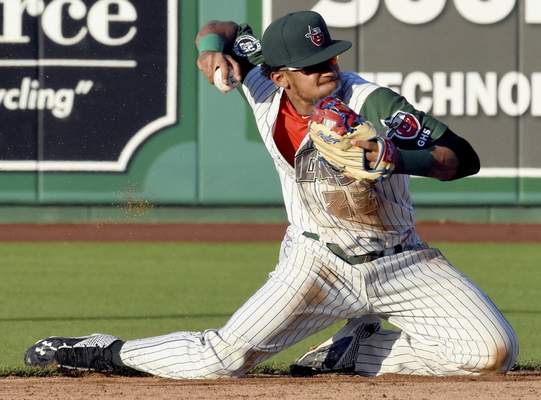The Importance of the Rise of Fernando Tatis Jr.

Credit: Ryan Cox

The A.J. Preller era of the San Diego Padres has been defined by risky moves and the hoarding of high-upside prospects.
Many of these high risk/high ceiling prospects won’t pan out, but the ones that do will provide the foundation for a long-term rebuild that will hopefully turn the Padres into what recently rebuilt clubs like the Chicago Cubs and Houston Astros have become.
Those two long-suffering franchises have transformed themselves from cellar dwellers into powerhouses by focusing on acquiring premium prospects and developing them into premium major league players.
By signing eight of the top 50 international free agents in 2016, and drafting high-upside pitcher Mackenzie Gore out of high school with the 3rd overall pick in 2017, the Padres have committed to acquiring premium young talent. While Gore and the 2016 international signings have given the Padres significant long-term depth, the addition of Fernando Tatis Jr. in the James Shields trade might be the most significant acquisition A.J. Preller has made.
Tatis signed for the White Sox in 2015 for $700,000 and was ranked as the number 30 international free agent by MLB.com. His scouting report at the time mentioned his pull side raw power, knack for barreling up balls and his ability to play second or third base. That’s a nice, if not overly impressive profile. The impressive stuff came this season in Ft Wayne.
Over second half of the season (June 20-present), the best hitter in the minors is Fernando Tatis Jr. .301/.446/.628 in 183 ABs
— JJ Cooper (@jjcoop36) August 24, 2017
Furthermore, over his last 190 plate appearances for Fort Wayne, Tatis slashed .322/.463/.671 and bashed 10 of his 21 home runs, and Padres farm director Sam Geaney said “the league wasn’t challenging him” anymore. As such, he was promoted to Double-A San Antonio.
So what kind of dark arts did A.J. Preller employ to trick the White Sox into trading Tatis away for James Shields? Well, even though he had a “knack for barreling up the ball”, he had no track record of doing so at the pro level when he was traded to San Diego. If the White Sox saw Tatis as being able to advance to Double-A so soon, they wouldn’t have traded him.
The fact that he has completely blown past his profile of having some pull side raw power, that he’s built on his barreling up knack, and has so far survived as a shortstop, is probably more down to the fact that he’s just one of the ones that is panning out and not so much that the Padres saw something the White Sox didn’t. The White Sox saw something in him, or they wouldn’t have paid him $700,000 dollars to sign as a 16-year-old. Without a track record or an eye-catching profile with multiple plus tools, he was viewed as expendable to the White Sox who, for a hot second, thought they were contenders and that Shields was a worthy “win now” investment. Meanwhile, the Padres were more than willing to take a gamble on a guy with some feel for hitting and a big league pedigree.

Some lottery tickets pan out.
Let’s not get ahead of ourselves, though. He hasn’t “panned out” by getting to Double-A so quickly and impressively. Adjusting to the upper minors will be a challenge, and his performance in Double-A will be telling. Continuing his current trajectory into a much tougher league could begin to raise comparisons between Tatis and another oversized shortstop with a knack for making good contact; Carlos Correa. While Correa has become one of the preeminent hitting shortstops in baseball, and Tatis is nowhere near as talented at the moment, the performances of both players while in single A are comparable.
As an 18-year-old in A ball, Correa hit .320/.405/.467. While Tatis started a little slower and his total numbers at that level aren’t as impressive as Correa’s, his .322/.463/.671 slash line over his final 190 plate appearances at that level are actually more impressive, with more power, than Correa’s numbers at that level.
Of course, the impressive thing about Correa is that he didn’t slow down when he got promoted to the upper minors, or into the majors, and actually grew as a power hitter. That growth has placed him among the elite in the game today and his abilities have made a big impact as the Astros are gearing up for October baseball. For the Padres to return to the playoffs, the impressive collection of high-upside young talent will need to yield at least one guy that, like Correa, meets and exceeds what is expected. As such, Tatis is a very important player to the Padres organization right now because he has exceeded expectations thus far.
It is far from a guarantee that he will continue improving to the point that he becomes the centerpiece of the Padres rebuild. However, the player that does fill that role will begin by doing what Fernando Tatis Jr. is doing now.
Sean grew up watching and playing sports in Louisiana, but is now living in San Diego pursuing a MBA at University of Phoenix. Always had a soft spot for San Diego teams and is excited about the new buzz surrounding the Padres.